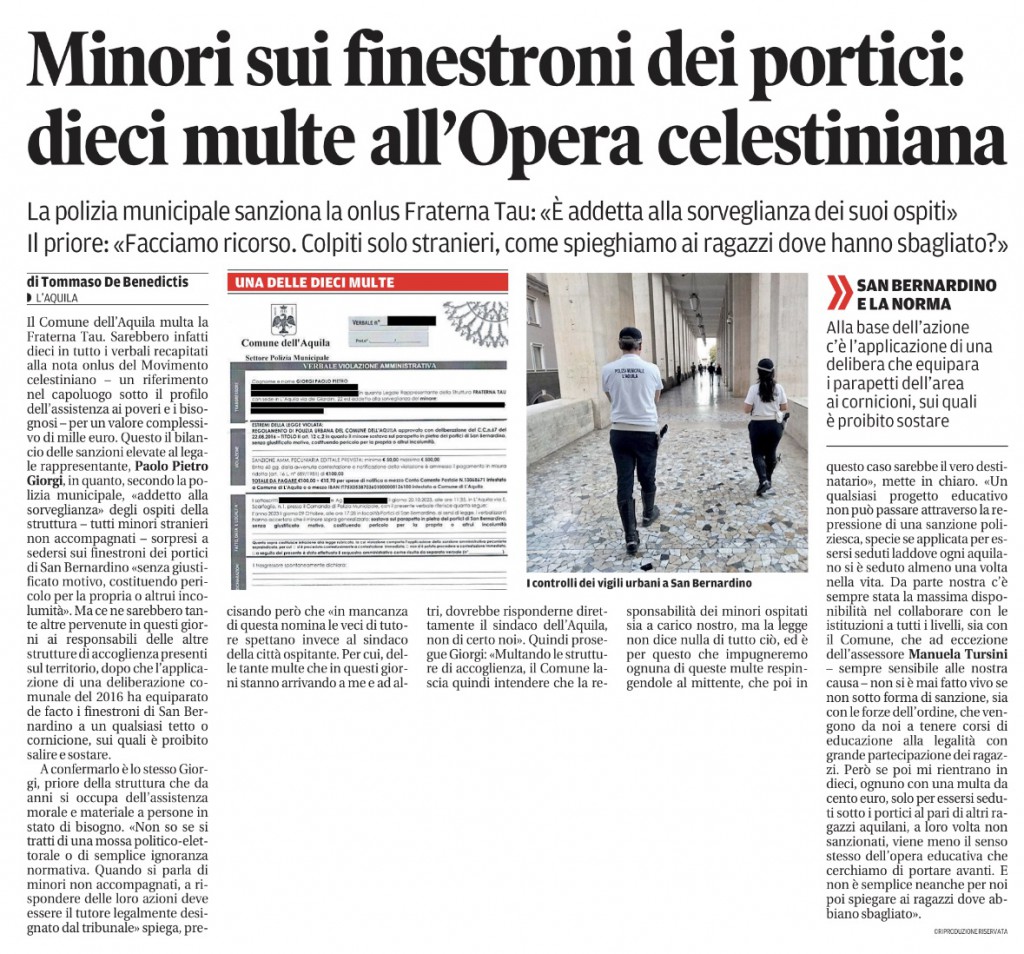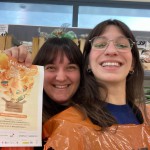Golosità dal mondo nella prima Cena Etnica Fraterna del Movimento

“Costruisci un tavolo più lungo per i tuoi ospiti, non un muro più alto per gli estranei”. All’insegna di questo aforisma dell’autore Fabrizio Caramagna, il Movimento Celestiniano dell’Aquila ha celebrato la sua prima Cena Etnica Fraterna, ospitata nella sala polivalente della struttura di via Raffaele Paolucci. Un esperimento riuscito cui, hanno annunciato i promotori, seguirà un evento più ampio dello stesso tipo allargato alla collettività aquilana.
A caratterizzare la serata, il menù di dieci piatti tipici provenienti dalle cucine di tutto il mondo elaborato dai ragazzi della comunità per minorenni non accompagnati “Mani Tese”, curata dalla onlus Fraterna Tau, che hanno preparato personalmente le pietanze. Tra gli ospiti anche le insegnanti delle scuole superiori frequentate dai minori.
Il menù ha previsto riso con pollo, pomodori, peperoni, melanzane e pepe nero (Guinea); riso speziato con peperoni, curcuma, limone e cannella (Egitto); Akawi con coda di bue (Egitto); riso con pomodoro e cipolla (Liberia); Poullet yassa con pollo, riso basmati, limone, cipolle, timo e alloro (Senegal); Hawaoshi con pane arabo, carne tritata, cipolla, coriandolo, cumino e salsa Tahina (Egitto); Fataya con impasto di farina e ripieno di tonno e salse (Senegal); Fegato all’Alessandria con pane arabo e pepe nero (Egitto); Kochari con pasta mista di vari formati, lenticchie, cipolla e salse (Egitto);
La cena è stata introdotta dal coordinatore del Movimento Celestiniano, Paolo “Pierino” Giorgi. “Questa prima esperienza con i minori ci ha entusiasmato, in città c’era bisogno di far fronte alla richiesta, giovani d’oltremare venivano a chiedere aiuto – ha spiegato – Abbiamo attivato le nostre strutture e siamo riusciti ad aprire una casa famiglia con grandi sacrifici. La nostra attività si preoccupa di mettere al centro la persona, i ragazzi, quindi abbiamo preso pochi ospiti piuttosto che creare un grosso istituto per avere tanti numeri”.
Giorgi ha ammesso che “l’attività è molto impegnativa, il centro ci dà tanto da lavorare, ma quando ci sono impegno e dedizione i risultati arrivano. I ragazzi sono vivi e volenterosi come questi cibi colorati – ha aggiunto indicando il grande tavolo con i piatti etnici- Stare insieme mentre si mangia è un collegamento, un sentimento universale”.
“Con questa conviviale ricominciamo percorso un po’ lasciato nel dimenticatoio, a gennaio faremo una cena di beneficenza etnica aperta alla città – ha annunciato Giorgi in conclusione – Faremo vedere all’Aquila che cosa sono capaci di fare questi ragazzi e quello che ci possono restituire come impegno e amore”.
A seguire ha preso la parola Francesca Giorgi che ha l’evidenziato “il bellissimo bigliettino scritto dalle docenti ai ragazzi, qualcosa che va oltre ciò che ci si aspetta normalmente, va oltre il turno di lavoro. I ragazzi vengono presi a cuore dalle persone, il processo educativo fatto bene è un obiettivo più facilmente quando viene sposato da tutti gli attori che hanno a che fare con loro, nello sport come a scuola e negli altri ambiti”.
“L’obiettivo è condividere un progetto educativo che i ragazzi portano avanti. Importante sarà farci conoscere sempre di più e abbattere i pregiudizi”, ha concluso.
Delicacies from the world in the first Fraternal Ethnic Dinner of the Movement
“Build a longer table for your guests, not a higher wall for strangers.” Under the banner of this aphorism by the author Fabrizio Caramagna, the Celestinian Movement of L’Aquila celebrated its first Fraternal Ethnic Dinner, hosted in the multipurpose room of the structure in via Raffaele Paolucci. A successful experiment which, the promoters have announced, will be followed by a larger event of the same type extended to the L’Aquila community.
To characterize the evening, the menu of ten typical dishes from cuisines all over the world prepared by the children of the “Mani Tese” community for unaccompanied minors, managed by the non-profit organization Fraterna Tau, who personally prepared the dishes. Among the guests were also the teachers of the high schools attended by the minors.
The menu included rice with chicken, tomatoes, peppers, aubergines and black pepper (Guinea); spiced rice with peppers, turmeric, lemon and cinnamon (Egypt); “Akawi” with oxtail (Egypt); rice with tomato and onion (Liberia); “Poullet yassa” with chicken, basmati rice, lemon, onions, thyme and bay leaves (Senegal); “Hawaoshi” with Arabic bread, minced meat, onion, coriander, cumin and tahina sauce (Egypt); “Fataya” with flour dough and stuffed with tuna and sauces (Senegal); Alexandrian-style liver with Arabic bread and black pepper (Egypt); “Kochari” with mixed pasta of various shapes, lentils, onion and sauces (Egypt);
The dinner was introduced by the coordinator of the Celestinian Movement, Paolo “Pierino” Giorgi. “This first experience with minors thrilled us, in the city there was a need to meet the demand, young people from overseas came to ask for help – he explained – We activated our structures and managed to open a family home with large sacrifices. Our business is concerned with putting the person, the kids, at the center, so we took a few guests rather than creating a large institute to have a lot of numbers.”
Giorgi admitted that “the activity is very demanding, the center gives us a lot to work on, but when there is commitment and dedication the results come. The kids are alive and willing like these colorful foods – he added, pointing to the large table with ethnic dishes – Being together while eating is a connection, a universal feeling”.
“With this convivial we are starting again on a path that has been somewhat forgotten, in January we will have an ethnic charity dinner open to the city – announced Giorgi in conclusion – We will show L’Aquila what these guys are capable of doing and what they can give us back as commitment and love.”
Francesca Giorgi then took the floor and highlighted “the beautiful note written by the teachers to the students, something that goes beyond what is normally expected, goes beyond the work shift. Children are taken to heart by people, the educational process done well is an objective more easily when it is embraced by all the actors who have to deal with them, in sport, at school and in other areas”.
“The objective is to share an educational project that the children carry out. It will be important to make ourselves known more and more and break down prejudices,” she concluded.
L’articolo del quotidiano Il Centro sull’intervento di Padre Quirino all’iniziativa “Natale al Monastero di San Basilio”.

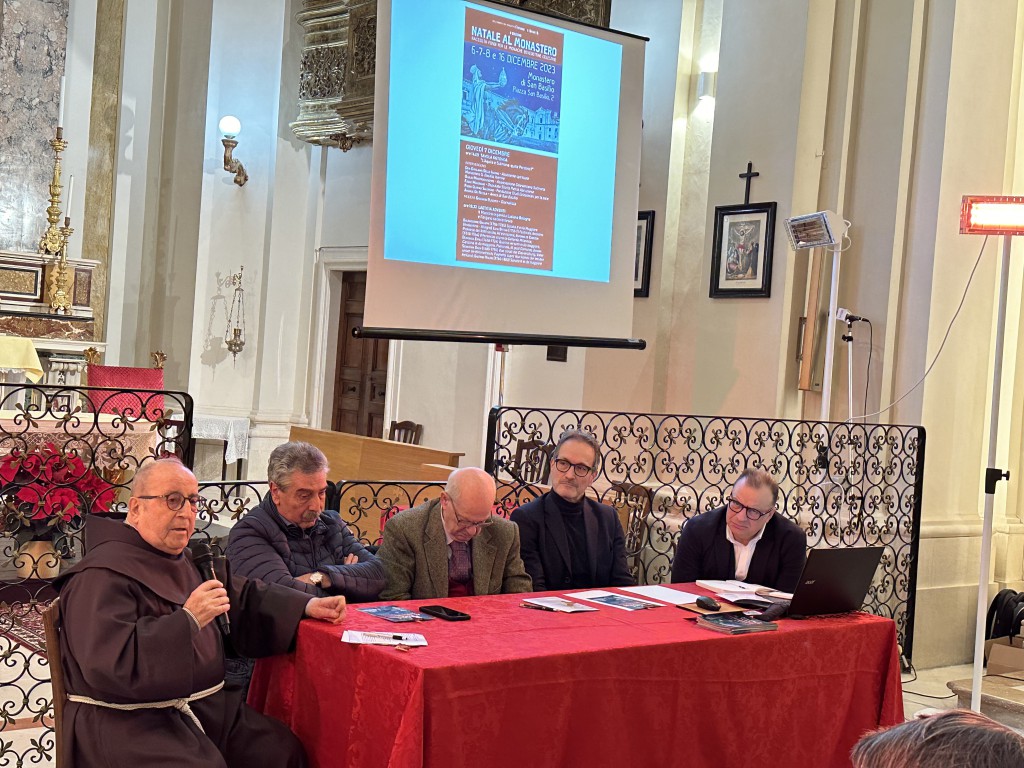
“Stiamo litigando sul primato di possesso di Celestino V. Ma Celestino è di tutti. La Perdonanza è partita dall’Aquila, ma è diretta all’universo”. Questo l’ammonimento di Padre Quirino Salomone, frate francescano, giornalista e studioso di cose celestiniane, per oltre vent’anni rettore della Basilica di Santa Maria di Collemaggio, nell’ambito della tavola rotonda “L’Aquila e Sulmona: quale Perdono?” organizzata nell’ambito della rassegna eventi “Natale al Monastero di San Basilio”.
Obiettivo dell’iniziativa, cominciare a superare una dicotomia atavica e non più giustificabile tra L’Aquila, sede della Basilica di Collemaggio dove Celestino fu incoronato e dove si celebra da 729 anni la Perdonanza, e Sulmona e la Valle Peligna, dove il santo eremita visse e operò in gran parte della sua esistenza. E un primo traguardo di pacificazione in tal senso sarà il varo annunciato di iniziative comuni, in vista dell’edizione 2024 dell’evento celestiniano. All’incontro hanno preso parte il giornalista e scrittore Angelo De Nicola, degli Amici di San Basilio; Giulio Mastrogiuseppe dell’Associazione Celestiniana Sulmona; e Fabio Maiorano, deputato di Storia patria abruzzese. La moderazione è stata curata dal giornalista Giovanni Ruscitti.
“Nel 1983, quando nacque il Centro studi Celestiniani, la mia soddisfazione era vedere in piazza duomo gli stendardi sia dell’Aquila che di Sulmona – ha ricordato Padre Quirino – Celestino può essere nato ovunque, ma è di chi lo vuole ascoltare. È un maestro di vita, è un buon consigliere che desiderava si vivesse in pace”. Salomone è tornato anche sul concetto di Giubileo imposto dal Papa del Perdono con la sua Perdonanza, diversificandolo in modo netto dall’idea di indulgenza. “Celestino fa un’ordinanza di perdono e dice: vi voglio in pace. Non si riferiva solo ai peccati. Una volontà di giubileo che, invece, oggi viene ammansita nel concetto di indulgenza – ha fatto notare – L’indulgenza può averla chiunque in privato, manca piuttosto il coraggio di perdonarsi gli uni gli altri. Questo era il fascino di Celestino!”.
Non è mancata una critica alla città dell’Aquila, che Papa Francesco – nella sua storica visita del 2022 – ha definito “Capitale del perdono”. “Tutti dovrebbero scendere in piazza e darsi la mano e perdonarsi – ha proseguito Salomone – Invece il 90 per cento degli aquilani è in lite: o hai denunciato qualcuno o qualcuno ti ha denunciato. In queste condizioni, come si fa a chiamarla Capitale del perdono?”. Padre Quirino si è soffermato anche a fare un ritratto della figura celestiniana, affermando che “aveva una volontà ferrea, tale da tenere in mano le curie e i regni, mai disse mezza parola in obbedienza a Carlo D’Angiò o alla Curia di Roma. Era un uomo terribilmente libero in mezzo a tante difficoltà e perché no, tanti errori, perché i santi non sono perfetti – ha rimarcato – L’analisi che fece dell’andamento della Chiesa era saggia: questa Cristianità non funziona, manca che i fedeli siano d’accordo e in pace. La parola del perdono di Assisi costituì sempre il leitmotiv della sua spiritualità, di qui la Perdonanza”. Al termine della manifestazione, nel concerto “Laetitia Adventi” il Maestro organista Luciano Bologna si è esibito suonando l’organo settecentesco, recentemente restaurato, del monastero di San Basilio.
Father Quirino: “Don’t argue about Celestine, Forgiveness belongs to everyone!”
“We are arguing about Celestino V’s record of possession. But Celestino belongs to everyone. Forgiveness started from L’Aquila, but is directed to the universe.” This is the warning of Father Quirino Salomone, Franciscan friar, journalist and scholar of Celestine things, rector of the Basilica of Santa Maria di Collemaggio for over twenty years, as part of the round table “L’Aquila and Sulmona: what forgiveness?” organized as part of the “Christmas at the Monastery of San Basilio” event series.
The aim of the initiative is to begin to overcome an atavistic and no longer justifiable dichotomy between L’Aquila, home to the Basilica of Collemaggio where Celestine was crowned and where Perdonanza has been celebrated for 729 years, and Sulmona and the Peligna Valley, where the hermit saint lived and worked for most of its existence. And a first goal of pacification in this sense will be the announced launch of joint initiatives, in view of the 2024 edition of the Celestine event. The journalist and writer Angelo De Nicola, from the Friends of San Basilio, took part in the meeting; Giulio Mastrogiuseppe of the Celestiniana Sulmona Association; and Fabio Maiorano, deputy of Abruzzo homeland history. The moderation was handled by the journalist Giovanni Ruscitti.
“In 1983, when the Celestine Studies Center was born, my satisfaction was seeing the banners of both L’Aquila and Sulmona in the Piazza Duomo – Father Quirino recalled – Celestine may have been born anywhere, but he belongs to those who want to listen to him. He is a teacher of life, he is a good counselor who wanted us to live in peace”. Solomon also returned to the concept of the Jubilee imposed by the Pope of Forgiveness with his Pardon, clearly diversifying it from the idea of indulgence.
“Celestino makes an ordinance of forgiveness and says: I want you in peace. He wasn’t just referring to sins. A desire for jubilee which, however, today is tamed in the concept of indulgence – he pointed out – Anyone can have an indulgence in private, what is lacking is the courage to forgive one another. This was Celestino’s charm!”.
There was no lack of criticism of the city of L’Aquila, which Pope Francis – in his historic visit in 2022 – defined as the “Capital of Forgiveness”. “Everyone should take to the streets and shake hands and forgive each other – continued Salomone – Instead 90 percent of the people of L’Aquila are in dispute: either you have reported someone or someone has reported you. Under these conditions, how can you call it the Capital of Forgiveness?”. Father Quirino also stopped to paint a portrait of the Celestine figure, stating that “he had an iron will, such as to hold the curiae and kingdoms in his hands, he never said half a word in obedience to Charles of Anjou or the Curia of Rome. He was a terribly free man in the midst of so many difficulties and why not, so many errors, because the saints are not perfect – he remarked – The analysis he made of the progress of the Church was wise: this Christianity does not work, the faithful lack in agreement and at peace. The word of forgiveness from Assisi always constituted the leitmotif of his spirituality, hence Forgiveness”. At the end of the event, in the “Laetitia Adventi” concert, the master organist Luciano Bologna performed playing the recently restored eighteenth-century organ of the monastery of San Basilio.
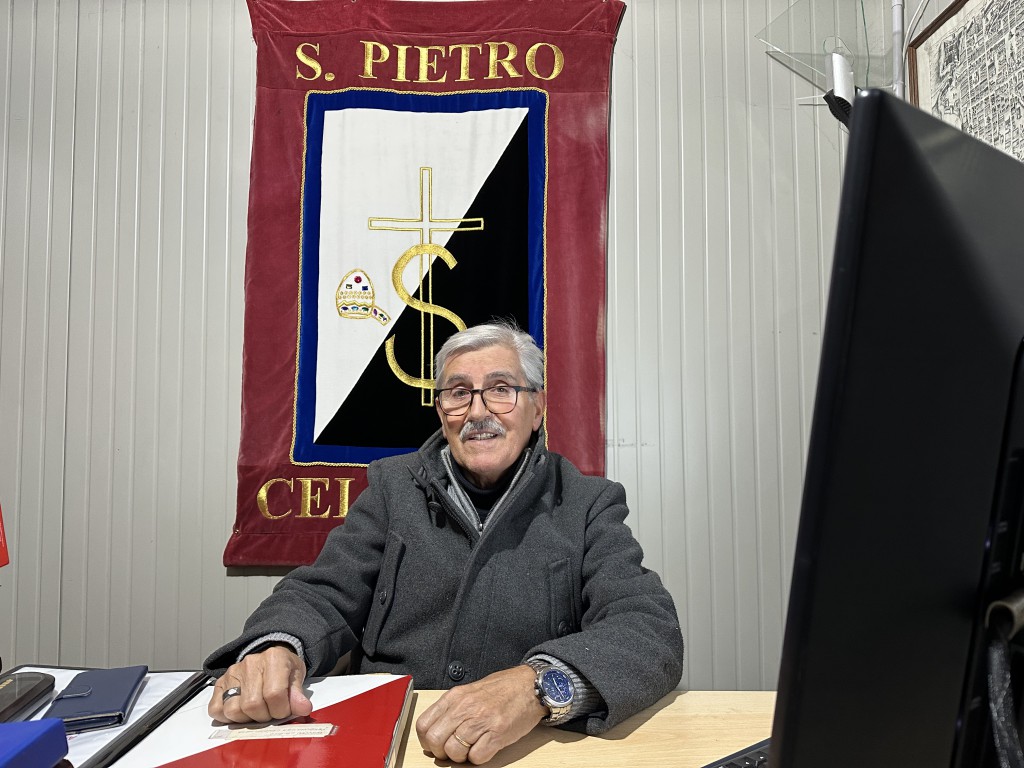
Parte ogni anno – appena dopo Ferragosto – dall’eremo di Sant’Onofrio, luogo in cui Pietro Angelerio viveva prima di diventare Papa Celestino V: è il Fuoco del Morrone, simbolo di pace, fratellanza e riconciliazione, che caratterizza la Perdonanza. Si tratta di una manifestazione più longeva dello stesso evento celestiniano come è inteso oggi: il Fuoco, infatti, risale al 1980, la Perdonanza al 1983 e da allora il Fuoco è parte integrante delle celebrazioni celestiniane. L’itinerario è quello idealmente percorso da Celestino alla fine di agosto del 1294, per arrivare all’Aquila e vestire le insegne di pontefice nella basilica di Collemaggio, da lui fatta erigere. Quella del 2024 sarà la quarantacinquesima edizione: un traguardo significativo, con vista sul mezzo secolo. Va evidenziato come questi aspetti siano risultati decisivi per l’attribuzione all’intera Perdonanza del titolo di Patrimonio immateriale dell’umanità da parte dell’Unesco. Per saperne di più, abbiamo rivolto alcune domande a Floro Panti, presidente del Centro internazionale di studi celestiniani e “padre” della manifestazione.
Come è nato il Fuoco del Morrone?
Tutto è nato all’interno dei Liberi podisti aquilani, prima associazione che fu creata nel 1980. Con padre Quirino Salomone, che già da un anno stava preparando qualcosa, attraverso il presepe vivente di Pianola, abbiamo pensato a una fiaccola che dall’Eremo del Morrone scendesse fino all’apertura della Porta Santa di Santa Maria di Collemaggio, tutto in un giorno solo. La mattina del 28 agosto, così, siamo partiti come un gruppo di amici e con un percorso veloce abbiamo attraversato tutta la Valle Subequana fino ad arrivare a Collemaggio la sera. C’era la banda della Brigata “Acqui” e i Vigili del fuoco, grazie alla loro scala mobile, accesero il tripode posizionato sul torrione. Non ricordo chi aprì la Porta Santa, ma dal secondo anno, 1981 e l’anno seguente, fu aperta dal cardinale Corrado Bafile.
L’anno seguente è stata lanciata la Perdonanza “moderna”.
Nel 1983 è stata un’iniziativa del sindaco, “don” Tullio De Rubeis, che era già presidente del Centro internazionale di studi celestiniani. È partito quello che è stato il primo Corteo della Bolla con Errico Centofanti, che si era occupato di presentare un progetto di quello che poteva essere il corteo. La Bolla era contenuta in un ostensorio ligneo, di colore verde, realizzato dallo scultore Remo Brindisi, che oggi si trova all’ingresso di palazzo Fibbioni, sede municipale, dopo essere stato per lunghi anni anonimamente a palazzo Margherita. Il cardinale invitato ad aprire la Porta Santa era Carlo Confalonieri, già arcivescovo dell’Aquila. Abbiamo continuato a riproporre il modello dell’arrivo a Collemaggio come nel primo anno.
Come si è evoluta, poi, la manifestazione?
Nel 1984 ci siamo presi un paio di giorni in più e siamo andati a celebrare il rito di accensione nel cortile di piazza Palazzo, d’intesa con il sindaco Enzo Lombardi. Nell’86 è arrivato un marchingegno contrassegnato dall’emblema del Comune che, con una manovella, portava su il braciere con il fuoco fino in cima alla torre di palazzo. A quel punto, il vigile accendeva il tripode e partivano i fuochi artificiali. Quella edizione era stata contraddistinta dalla presenza di ragazzi libanesi nostri ospiti per tutto il periodo – nel loro Paese si era scatenata la guerra civile – Hanno partecipato a tutte le manifestazioni della fiaccola e in particolare all’accensione. Una ragazza si era commossa e fu scritto che era il miglior segno della Perdonanza: una trentina di anni dopo ho scoperto che è diventata responsabile del comitato olimpico libanese, Hala Husseini.
Il Fuoco non ha mai fermato il suo percorso, nemmeno dopo il 6 aprile 2009…
Neanche il terremoto ci ha fermato, sono 45 anni ininterrotti di attività. Quell’anno, in particolare, abbiamo visitato tutte le tendopoli di tutti i comuni coinvolti, dalla Valle Subequana in giù, e ci siamo spinti fino alla frazione di Camarda, allargando il giro. Da tempera abbiamo imboccato la vecchia strada fino ad arrivare in città, alla Fontana Luminosa. C’era tutta zona rossa, ad aspettarci nessuno tranne i vigili e i rappresentanti della questura. C’era questo gruppo di otto amici che si erano alternati nel percorso finale, alcuni dei quali, tra l’altro, oggi non ci sono più. Volevamo passare insieme lungo il corso, ma solo uno è stato autorizzato, così sono mi sono prestato io.
Come è andata?
Ci sono le foto che mi ha scattato un vigile del fuoco di nome Romeo. Un’auto della polizia mi seguiva per fare luce con i fari, dato che il corso era tutto buio, un vigile era davanti con un’altra auto che apriva il corteo e lui a piedi scattava le foto. In piazza Duomo c’era Pierino Giorgi ad aspettarmi con gli sbandieratori e i Cavalieri di Celestino. Un’emozione forte, ho terminato piangendo di brutto. Siamo proseguiti fino a Collemaggio, passando all’interno della tendopoli che era sul prato dinanzi alla basilica, e siamo andati dietro l’edificio dove c’erano quattro gatti ad aspettarci. Era il 26 agosto, due giorni dopo c’è stato il Corteo della Bolla dai Quattro Cantoni con il sindaco Massimo Cialente. La teca con il corpo di Celestino sarebbe partita per il giro delle varie regioni, è rimasta lontano dall’Aquila per un anno facendo varie tappe, Chieti, Isernia, Lanciano. L’anno all’interno della basilica era stata costruita una copertura provvisoria e la teca è stata posizionata sul moncone della colonna fino ai lavori di ricostruzione.
Interview with Panti, “Everything was born from the Morrone Fire 45 years ago”
It starts every year – just after August 15th – from the hermitage of Sant’Onofrio, the place where Pietro Angelerio lived before becoming Pope Celestine V: it is the Morrone Fire, symbol of peace, brotherhood and reconciliation, which characterizes Forgiveness. It is a longer-lived manifestation of the same Celestine event as it is understood today: Fire, in fact, dates back to 1980, Forgiveness to 1983 and since then Fire has been an integral part of Celestine celebrations. The itinerary is the one ideally followed by Celestine at the end of August 1294, to arrive in L’Aquila and take on the insignia of pontiff in the basilica of Collemaggio, which he had built. 2024 will be the forty-fifth edition: a significant milestone, with a view to half a century. It should be highlighted that these aspects were decisive for the attribution of the title of Intangible Heritage of Humanity by UNESCO to the entire Perdonanza. To find out more, we asked some questions to Floro Panti, president of the International Center for Celestine Studies and “father” of the event.
How was the Morrone Fire born?
It all started within the Free runners of L’Aquila, the first association created in 1980. With Father Quirino Salomone, who had already been preparing something for a year, through the living nativity scene of Pianola, we thought of a torch that from the Hermitage of Morrone descended to the opening of the Holy Door of Santa Maria di Collemaggio, all in a single day. Thus, on the morning of August 28th, we set off as a group of friends and with a quick route we crossed the entire Subequana Valley until arriving in Collemaggio in the evening. The band of the “Acqui” Brigade was there and the firefighters, thanks to their escalator, lit the tripod positioned on the tower. I don’t remember who opened the Holy Door, but from the second year, 1981 and the following year, it was opened by Cardinal Corrado Bafile.
The following year “modern” Forgiveness was launched.
In 1983 it was an initiative of the mayor, “Don” Tullio De Rubeis, who was already president of the International Center for Celestine Studies. The first Bubble Procession began with Errico Centofanti, who was responsible for presenting a project of what the procession could be. The Bull was contained in a green wooden monstrance, created by the sculptor Remo Brindisi, which today is located at the entrance to Palazzo Fibbioni, the municipal headquarters, after having been anonymously in Palazzo Margherita for many years. The cardinal invited to open the Holy Door was Carlo Confalonieri, former archbishop of L’Aquila. We continued to propose the model of arriving in Collemaggio as in the first year.
How did the event evolve then?
In 1984 we took a couple of extra days and went to celebrate the lighting rite in the courtyard of Piazza Palazzo, in agreement with the mayor Enzo Lombardi. In 1986, a device marked with the emblem of the Municipality arrived which, with a crank, raised the brazier with fire to the top of the palace tower. At that point, the policeman lit the tripod and the fireworks went off. That edition was characterized by the presence of Lebanese young people who were our guests for the entire period – the civil war had broken out in their country – They participated in all the torch demonstrations and in particular at the lighting. A girl was moved and it was written that she was the best sign of Forgiveness: about thirty years later I discovered that she became head of the Lebanese Olympic Committee, Hala Husseini.
The Fire never stopped its path, not even after April 6, 2009…
Not even the earthquake stopped us, it’s been 45 uninterrupted years of activity. That year, in particular, we visited all the tent cities of all the municipalities involved, from the Subequana Valley downwards, and we went as far as the hamlet of Camarda, expanding the tour. From tempera we took the old road until we arrived in the city, at the Luminous Fountain. There was an entire red zone, with no one waiting for us except the police and representatives of the police station. There was this group of eight friends who took turns on the final journey, some of whom, among other things, are no longer with us today. We wanted to go along the course together, but only one was authorized, so I volunteered.
How did it go?
There are photos that a firefighter named Romeo took of me. A police car followed me to shed light with its headlights, since the street was completely dark, a policeman was in front with another car leading the procession and he took the photos on foot. Pierino Giorgi was there waiting for me in Piazza Duomo with the flag-wavers and the Knights of Celestine. A strong emotion, I ended crying badly. We continued up to Collemaggio, passing inside the tent city which was on the lawn in front of the basilica, and we went behind the building where there were four cats waiting for us. It was August 26th, two days later there was the Procession of the Bull from the Four Cantons with the mayor Massimo Cialente. The casket with Celestine’s body would have left for a tour of the various regions, it remained away from L’Aquila for a year making various stops, Chieti, Isernia, Lanciano. That year, a temporary roof was built inside the basilica and the reliquary was positioned on the stump of the column until the reconstruction works.

Il Movimento Celestiniano approda su Twitter! La popolare rete sociale di “microblogging”, famosa per i “tweet” ossia cinguettii, messaggi di testo molto brevi per condividere notizie secche e rapide. E proprio in quest’ottica, il Movimento ha deciso di estendere la propria attività comunicativa e sociale anche su questa piattaforma, che di recente ha cambiato nome, in “X”, e logo, dall’uccellino azzurro dei primordi ad appunto una X bianca su sfondo nero. Chiunque potrà dare il “follow” e seguire l’account Twitter del Movimento, per avere notizie puntuali sulle attività che vengono compiute all’interno delle strutture, nonché poter usufruire di approfondimenti sugli stessi argomenti e sui temi di Celestino V e della Perdonanza. Seguirci su Twitter è facilissimo: basta iscriversi gratuitamente, cliccare su https://twitter.com/CelestinianoMov e cliccare il tasto “segui”.
We’re on Twitter!
The Celestinian Movement arrives on Twitter! The popular “microblogging” social network, famous for “tweets”, very short text messages for sharing quick, dry news. And precisely with this in mind, the Movement has decided to extend its communicative and social activity also on this platform, which recently changed its name, to “X”, and logo, from the original blue bird to a white letter X on black background. Anyone will be able to “follow” the Movement’s Twitter account, to receive timely news on the activities carried out within the structures, as well as be able to benefit from in-depth information on the same topics and on the themes of Celestine V and Celestinian Forgiveness. Following us on Twitter is very easy: just sign up for free, click on https://twitter.com/CelestinianoMov and click the “follow” button.
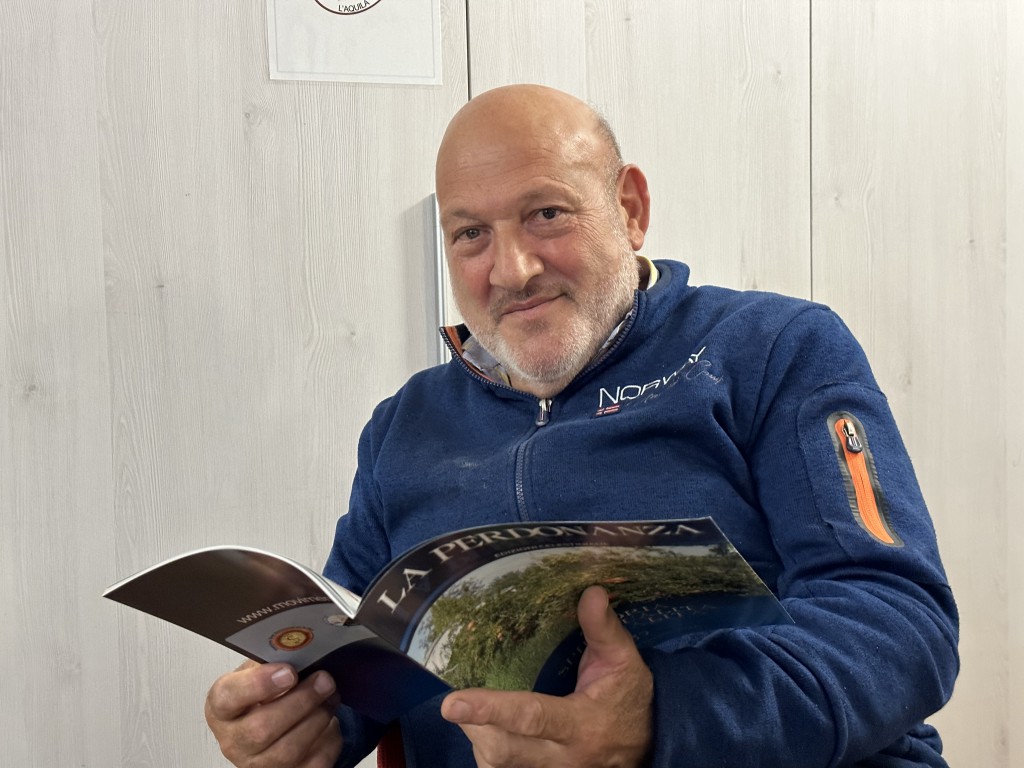
Con Paolo “Pierino” Giorgi, coordinatore del Movimento Celestiniano, concludiamo il “viaggio” all’interno di questa organizzazione per saperne di più su origini, finalità, sviluppo e prospettive future. La terza e, per ora, ultima tappa di questo colloquio riguarda la più stretta attualità: il fenomeno dei migranti, che ha coinvolto sempre più il Movimento e a tutt’oggi costituisce un’emergenza da affrontare con impegno e volontà quotidiani.
Come si passa dalla mensa dei poveri all’accoglienza dei migranti?
I poveri che assistevamo erano inizialmente per così dire “tutti nostri”: si conoscevano tutti, c’era questa riconoscibilità reciproca che nasceva dalla cittadinanza. Quando, in seguito, si è cominciato a imporre il fenomeno della migrazione, non potevamo certo fare finta di niente come associazione: la nostra missione è di accogliere. Molti stranieri venivano qui, non sapevano dove andare e noi li ospitavamo sempre.
Fece discutere i media il “caso” della tenda per il Ramadan posizionata accanto alla chiesa.
Alcuni musulmani arrivarono dopo due-tre anni che avevamo aperto, erano brave persone. Per il Ramadan non sapevano dove andare a pregare e allora ebbi l’idea di chiamare il compianto Mauro Zaffiri, che si prestò immediatamente a darci una mano: per un mese mettemmo su una tenda per il loro utilizzo e fu un periodo di grande felicità. Spesso andavamo a trovarli, io e Padre Quirino, e pregavamo assieme, allo stesso modo loro venivano nella chiesa di San Bernardino in Piazza d’Armi. Imitavamo Francesco d’Assisi che al sultano disse: “Io e te siamo fratelli”. Nacque, in quei giorni, un’amicizia che durerà per sempre.
Anche in una piccola città come L’Aquila, il fenomeno si è ampliato via via.
I migranti sono aumentati sempre di più, a dismisura, abbiamo dovuto aprire i centri d’accoglienza straordinari (Cas), delle strutture apposite, e poi è stata creata una cooperativa sociale per gestire questi luoghi. Oggi abbiamo molteplici attività per l’accoglienza di adulti, donne con bambini, famiglie e minori.
A proposito dei minori, qual è, a oggi, la situazione?
Quello dei minori stranieri non accompagnati è un fenomeno nuovo, che ci è saltato addosso senza che potessimo respirare. Abbiamo dovuto gestire queste dinamiche in emergenza, con l’apertura di comunità per minori con tutte le difficoltà del caso: spese enormi da sostenere, personale da reperire, strutture adeguate e a norma da realizzare. Non è stato facile, ma ce la stiamo mettendo tutta.
PRIMA PARTE: LE ORIGINI | SECONDA PARTE: LA MENSA
Interview with Giorgi/3, “Migrant emergency, we are doing our best”
With Paolo “Pierino” Giorgi, coordinator of the Celestinian Movement, we conclude the “journey” within this organization to learn more about its origins, purposes, development and future prospects. The third and, for now, last stage of this conversation concerns the most current issues: the phenomenon of migrants, which has increasingly involved the Movement and still constitutes an emergency to be faced with daily commitment and determination.
How do we go from the soup kitchen to welcoming migrants?
The poor we assisted were initially, so to speak, “all ours”: we all knew each other, there was this mutual recognition that arose from citizenship. When, later, the phenomenon of migration began to impose itself, we certainly couldn’t pretend nothing had happened as an association: our mission is to welcome. Many foreigners came here, they didn’t know where to go and we always hosted them.
The “case” of the Ramadan tent positioned next to the church caused discussion in the media.
Some Muslims arrived two or three years after we opened, they were good people. For Ramadan they didn’t know where to go to pray and so I had the idea of calling the mourned Mauro Zaffiri, who immediately lent us a hand: for a month we put up a tent for their use and it was a period of great happiness. We often went to visit them, Father Quirino and I, and prayed together, in the same way they came to the church of San Bernardino in Piazza d’Armi. We imitated Francis of Assisi who said to the sultan: “You and I are brothers”. In those days, a friendship was born that will last forever.
Even in a small city like L’Aquila, the phenomenon has gradually expanded.
Migrants have increased more and more, disproportionately, we had to open extraordinary reception centers (Cas), special structures, and then a social cooperative was created to manage these places. Today we have multiple activities to welcome adults, women with children, families and minors.
Regarding minors, what is the situation today?
That of unaccompanied foreign minors is a new phenomenon, which jumped on us without us being able to breathe. We had to manage these dynamics in emergency, with the opening of communities for minors with all the difficulties involved: enormous expenses to be incurred, staff to be found, adequate and compliant structures to be created. It hasn’t been easy, but we’re trying hard.

Grande successo di solidarietà e partecipazione, in Abruzzo e Molise, alla 27a Giornata Nazionale della Colletta Alimentare, cui il Movimento Celestiniano ha dato il proprio fattivo contributo schierando i propri volontari nel punto vendita Lidl dell’Aquila.
Il bilancio finale per quanto concerne il Movimento ammonta a 100 scatole riempite, risultato lusinghiero rispetto alle dimensioni e all’affluenza all’interno del punto vendita scelto.
Per quanto riguarda il dato complessivo regionale, grazie all’adesione di ben 444 punti vendita e il coinvolgimento di 4 mila volontari sono state raccolte 203 tonnellate, dato in aumento del 12 per cento rispetto all’anno scorso e superiore alla media nazionale che si ferma al +9 per cento (7.350 tonnellate).
Quella di quest’anno è stata definita la “Colletta dei ragazzi”, con il coinvolgimento, tra i volontari, di oltre 1.200 studenti.
In particolare, in provincia di Pescara sono state raccolte 63 tonnellate in 105 punti vendita (57 nel 2022), in provincia di Chieti 48 tonnellate in 103 punti vendita (41 nel 2022), in provincia di Teramo 54 tonnellate in 109 punti vendita (49 nel 2022), in provincia dell’Aquila 38 tonnellate in 52 punti vendita (34 nel 2022).
Food collection, 100 boxes of the Celestinian Movement
Great success of solidarity and participation, in Abruzzo and Molise, at the 27th National Food Collection Day, to which the Celestinian Movement gave its active contribution by deploying its volunteers in the Lidl store in L’Aquila.
The final balance regarding the Movement amounts to 100 filled boxes, a flattering result compared to the size and turnout within the chosen sales point.
As regards the overall regional data, thanks to the participation of 444 points of sale and the involvement of 4 thousand volunteers, 203 tons were collected, a figure that increased by 12 percent compared to last year and higher than the national average which stands at +9 percent (7,350 tons).
This year’s one has been defined as the “Children’s Collection”, with the involvement of over 1,200 students among the volunteers.
In particular, in the province of Pescara 63 tons were collected in 105 sales points (57 in 2022), in the province of Chieti 48 tons in 103 sales points (41 in 2022), in the province of Teramo 54 tons in 109 sales points (49 in 2022), in the province of L’Aquila 38 tonnes in 52 sales points (34 in 2022).
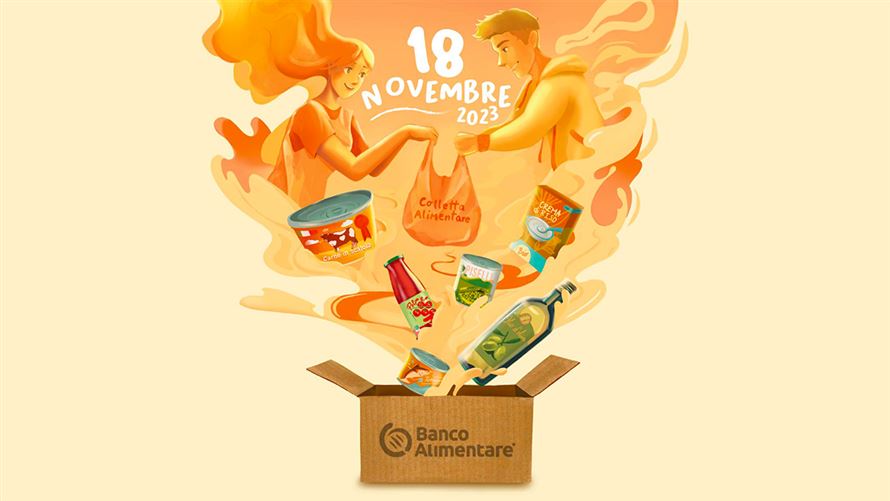
“Facciamo un gesto concreto insieme”: questo lo slogan della Giornata nazionale della colletta alimentare promossa dal Banco Alimentare. L’iniziativa prevede la presenza di volontari presso i punti vendita aderenti della grande distribuzione organizzata che invitano centinaia di migliaia di consumatori a donare una parte della propria spesa per le persone in difficoltà. L’obiettivo di questo evento è sensibilizzare la società civile sul problema della povertà, richiamando ai concetti di condivisione, gratuità e carità e raccogliere alimenti attraverso le donazioni delle persone che vi partecipano secondo il principio educativo di condividere i bisogni per condividere il senso della vita. Anche il Movimento Celestiniano si occuperà della raccolta, nel punto vendita Lidl dell’Aquila, in via Rocco Carabba, sabato 18 novembre, dalle 9 fino alle 20. All’iniziativa partecipano 14 mila supermercati in tutta Italia. Il Banco Alimentare ha fatto sapere che, per questa edizione, i prodotti di cui c’è maggiormente bisogno sono olio, verdure o legumi in scatola, polpa o passata di pomodoro, tonno o carne in scatola, alimenti per l’infanzia. Nel 2022 si sono registrate 7.512 tonnellate di alimenti raccolti negli 11.032 punti vendita aderenti, 143.300 volontari coinvolti e 4,7 milioni di italiani che hanno partecipato alla donazione.
The Celestinian Movement at the Food Bank collection
“Let’s make a concrete gesture together”: this is the slogan of the National Food Collection Day promoted by the Food Bank. The initiative involves the presence of volunteers at participating stores of large-scale retail trade who invite hundreds of thousands of consumers to donate part of their shopping for people in difficulty. The objective of this event is to raise awareness among civil society on the problem of poverty, recalling the concepts of sharing, gratuitousness and charity and to collect food through donations from the people who participate according to the educational principle of sharing needs to share the meaning of life . The Celestinian Movement will also take care of the collection, in the Lidl store in L’Aquila, in via Rocco Carabba, Saturday 18 November, from 9 am to 8 pm. 14 thousand supermarkets throughout Italy are participating in the initiative. The Food Bank has made it known that, for this edition, the products most needed are oil, canned vegetables or legumes, tomato pulp or puree, canned tuna or meat, and baby food. In 2022, 7,512 tons of food were collected in the 11,032 participating stores, 143,300 volunteers involved and 4.7 million Italians who participated in the donation.

Con Paolo “Pierino” Giorgi, coordinatore del Movimento Celestiniano, proseguiamo il “viaggio” all’interno di questa organizzazione per saperne di più su origini, finalità, sviluppo e prospettive future. La seconda tappa è, a tutt’oggi, un caposaldo dell’intero movimento, ovvero la mensa dei poveri denominata “Fraterna Tau”, che ha quasi un quarto di secolo di storia.
Torniamo indietro nel tempo all’anno duemila, quando si era in pieno spirito giubilare…
Il primo atto legato al Giubileo che abbiamo compiuto è stato proprio fondare la mensa dei poveri. Ci siamo accorti che, nella città dell’Aquila, mancava per gli indigenti un luogo dove consumare un pasto caldo, d’estate come d’inverno. Papa Giovanni Paolo II aveva concesso l’indulgenza e raccomandava opere di carità, così io e Padre Quirino Salomone abbiamo pensato di realizzare una struttura di questo tipo dove eravamo già posizionati, in viale dei Giardini. Fu possibile grazie all’allora sindaco, Antonio Centi, e al commissario dell’Ipab proprietario dell’immobile, Adolfo Calvisi.
Quali furono le prime battute della mensa?
La realizzammo con il contributo di alcuni imprenditori locali e della Caritas diocesana, di quella francescana nonché grazie alla nostra raccolta fondi. L’inaugurazione ci fu proprio il giorno della Perdonanza, il 28 agosto 2000, alla presenza anche dell’arcivescovo metropolita, monsignor Giuseppe Molinari, che benedisse la mensa con grande entusiasmo. Il nostro motto era “Ut unum sint” (ossia “perché siano una cosa sola”, parole tratte dalla preghiera sacerdotale di Gesù secondo il Vangelo di Giovanni, ndr). Tutti insieme per quello scopo di amore verso i poveri: era il nostro detto allora e rimane sempre lo stesso oggi.
Uno dei passaggi più drammatici fu il terremoto dell’Aquila.
Dopo la scossa distruttiva del 6 aprile 2009 siamo stati i primi a mettere su una tenda, nel piazzale del supermercato vicino al cimitero: la prima tenda di assistenza offerta da Confcooperative regionale, quindi sono stati fatti giungere due container in fretta e furia. Quando sono stati approntati i campi della Protezione civile, per noi è cominciato un lungo giro. Tenda per tenda, andavamo a ritrovare i nostri amici, i nostri vecchi poveri, e portavamo loro viveri e tutto ciò che serviva. Non ci siamo mai fermati. Padre Quirino a Chieti raccoglieva offerte e tutto ciò che poteva, e poi conduceva tutto da noi. Noi siamo rimasti in tenda per un anno, a San Panfilo d’Ocre, e da lì ci muovevamo per distribuire.
C’è mai stato il rischio di lasciare L’Aquila?
L’idea era ed è sempre stata quella di ripartire, di ricostruire, di starci, all’Aquila. Abbiamo avuto offerte di trasferirci fuori, tantissime proposte perché abbiamo tanti amici. A un certo punto, mi sono arrabbiato. Ho fatto un intervento pubblico che diceva: io ci sto, io resto, abbiamo goduto di questa città quando le cose andavano bene, adesso che L’Aquila è ferita non la dobbiamo abbandonare. La più grande esigenza era quella di accudire i poveri. Il sottosegretario, capo della Protezione civile e commissario per l’emergenza, Guido Bertolaso, così è stato invitato a costruire una nuova mensa, che era la struttura più necessaria.
Come è andata questa operazione?
Ci sono state difficoltà enormi per l’individuazione del terreno. Sono stato costretto a scrivere un ordine del giorno di mio pugno e a irrompere in Consiglio comunale, riunito alla ex scuola superiore Reiss Romoli, perché fosse approvato: il Comune tergiversava, Bertolaso stava per lasciare L’Aquila, così ho fatto il mio ingresso sventolando un foglio e ho sfidato i consiglieri dicendo loro: vediamo chi non firmerà. L’ho consegnato agli allora consiglieri Enzo Lombardi, Luigi D’Eramo e Pasquale Corriere. All’unanimità l’assemblea ha approvato il provvedimento, che impegnava la Giunta a concederci finalmente il terreno.
Quali sono state le fasi della costruzione?
Appena firmata la delibera di Giunta che assegnava il terreno alla Fraterna Tau per realizzare una mensa per i poveri, Bertolaso ha cominciato subito. È stata bandita una gara urgente, se l’è aggiudicata la ditta Meraviglia di Bulgarograsso (Como) che ha lavorato notte e giorno. La realizzazione è terminata in un anno preciso: il 6 aprile 2010 è stata inaugurata come la più importante e funzionale opera realizzata dalla Protezione civile, parole non mie, ma pronunciate dallo stesso Bertolaso. Con lui c’erano anche il sottosegretario alla Presidenza del Consiglio Gianni Letta, il prefetto e futuro capo della Protezione civile e della Polizia Franco Gabrielli, l’arcivescovo Molinari. Da quel giorno, i fornelli della mensa non sono stati mai spenti, come pure era avvenuto dal 2000 fino al terremoto.
PRIMA PARTE: LE ORIGINI
Interview with Giorgi/2, the soup kitchen has never turned off the stove
With Paolo “Pierino” Giorgi, coordinator of the Celestinian Movement, we continue the “journey” within this organization to learn more about its origins, purposes, development and future prospects. The second stage constitutes, to this day, a cornerstone of the entire movement, namely the soup kitchen called “Fraterna Tau”, which has almost a quarter of a century of history.
Let’s go back in time to the year 2000, when we were in full Jubilee spirit…
The first act linked to the Jubilee that we carried out was to found the soup kitchen. We realized that, in the city of L’Aquila, there was no place for the poor to have a hot meal, both in summer and winter. Pope John Paul II had granted the indulgence and recommended charitable works, so Father Quirino Salomone and I thought of creating a structure of this type where we were already positioned, in Viale dei Giardini. It was possible thanks to the then mayor, Antonio Centi, and the commissioner of IPAB, owner of the property, Adolfo Calvisi.
What were the first lines of the canteen?
We created it with the contribution of some local entrepreneurs and the diocesan and Franciscan Caritas as well as thanks to our fundraising. The inauguration took place on the day of Perdonanza, 28 August 2000, in the presence of the metropolitan archbishop, Monsignor Giuseppe Molinari, who blessed the table with great enthusiasm. Our motto was “Ut unum sint” (i.e. “so that they may be one”, words taken from the priestly prayer of Jesus according to the Gospel of John, ed.). All together for that purpose of love towards the poor: it was our saying then and it remains the same today.
One of the most dramatic passages was the L’Aquila earthquake.
After the destructive earthquake of 6 April 2009, we were the first to set up a tent, in the supermarket square near the cemetery: the first assistance tent offered by the regional Confcooperative, so two containers were quickly delivered. When the Civil Protection camps were prepared, a long journey began for us. Tent by tent, we went to see our friends, our poor old people, and brought them food and everything they needed. We never stopped. Father Quirino in Chieti collected offerings and everything he could, and then brought everything to us. We stayed in a tent for a year, in San Panfilo d’Ocre, and moved from there to distribute.
Was there ever a risk of leaving L’Aquila?
The idea was and always has been to start again, to rebuild, to stay there, in L’Aquila. We’ve had offers to move out, lots of proposals because we have lots of friends. At some point, I got angry. I made a public speech that said: I’m here, I’m staying, we enjoyed this city when things were good, now that L’Aquila is hurt we must not abandon it. The greatest need was to look after the poor. The undersecretary, head of Civil Protection and emergency commissioner, Guido Bertolaso, was invited to build a new canteen, which was the most necessary structure.
How did this operation go?
There were enormous difficulties in identifying the land. I was forced to write an agenda in my own hand and to burst into the City Council, meeting at the former Reiss Romoli high school, to have it approved: the Municipality prevaricated, Bertolaso was about to leave L’Aquila, so I made my entrance waving a sheet and I challenged the councilors by telling them: let’s see who won’t sign. I handed it over to the then councilors Enzo Lombardi, Luigi D’Eramo and Pasquale Corriere. The assembly unanimously approved the measure, which committed the council to finally grant us the land.
What were the construction phases?
As soon as the council’s resolution assigning the land to the Tau Fraternity to build a soup kitchen for the poor was signed, Bertolaso started immediately. An urgent public procurement was announced and the company Meraviglia from Bulgarograsso (Como) won it, working night and day. The construction ended in exactly one year: on 6 April 2010 it was inaugurated as the most important and functional work carried out by the Civil Protection, words not mine, but spoken by Bertolaso himself. With him there were also the undersecretary to the Presidency of the Council Gianni Letta, the prefect and future head of the Civil Protection and Police Franco Gabrielli, and Archbishop Molinari. From that day on, the stove in the canteen was never turned off, as had happened from 2000 until the earthquake.
L’articolo del quotidiano Il Centro sulle multe alla Fraterna Tau per la presenza di minori sui “finestroni” dei portici di San Bernardino e la replica del responsabile Paolo Giorgi.
